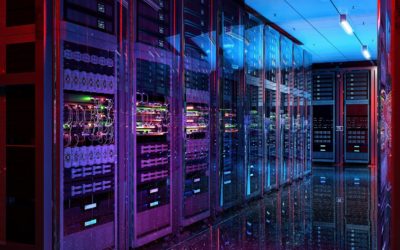According to a Lawrence Berkeley National Laboratory report, if the entire Cloud shifted to hyperscale facilities, energy usage could drop as much as 25 percent.
Why does this matter?
Cloud now has a greater carbon footprint than the airline industry. A single data center can consume the equivalent electricity of 50,000 homes, and at 200 terawatt hours (TWh) annually, data centers, in the aggregate, devour more energy than some nation-states.
The data center carbon emissions problem has become so severe that some have proposed relocating data centers to Nordic countries like Iceland or Sweden, using cool air to minimize carbon footprint (free cooling). Network signaling latency issues limit the effectiveness of such an approach, given the requirement for global access to resources, and still, companies, including Microsoft, continue to search for ways to address the growing concern, including its Natick Project, where data centers are operated under water.
Why do cloud data centers require so much energy?
To live up to Service Level Agreements (SLAs), data centers are designed to be hyper-redundant: If one virtual machine fails, another is ready to prevent a disruption in user experiences. Redundant power systems, including diesel generators, redundant servers, and so forth, add up. In fact, only 6 to 12 percent of the energy consumed is devoted to active computational processes. The remainder is allocated to cooling and maintaining fail-safe infrastructure that prevents costly downtime.
How can AI-driven, cloud optimization platforms address waste at both an industry-wide level and for every ultimate end-user of cloud services?
While 43% of the world’s 632 largest public companies have net-zero commitments, which are increasingly required by their investors and by increasing stringent government regulations, two-thirds of them fail to identify specific, clear conditions to get there according to a report prepared for a UN summit in Glasgow held at the end of 2021.
At the same time, more than three-quarters of business leaders cite ROI uncertainty as an obstacle to achieving net zero.
There is, in fact, a strong business case for net zero – a financial business case – and this extends beyond enterprises to MSPs and organizations of all sizes they serve.
Research shows that companies with high environmental, social, and governance (ESG) ratings have a lower cost of debt and equity.
A Cognizant study points to companies improving sales by virtue of ESG compliance.
But are these companies simply greenwashing?
Cloud Optimization is the answer: not only can any organization that consumes cloud services, from computing to storage to cybersecurity solutions to ERP and business applications, lower their direct costs – they can also lower their impact on the environment and enhance their ESG programs automatically.
MSPs and IT teams have the potential to be a leading or the leading contributor to ESG programs and carbon reduction, especially with the right instrumentation.
We’re at a crossroads. Technology teams can either do nothing while the carbon footprint expands, or they can help transform processes and use cloud services far more efficiently, including peak load management and calibrating consumption in real-time using automated systems like ours to master efficiency.
It’s not easy without these tools – this visibility into consumption patterns, areas of waste, and AI and ML-driven automated processes – based on policy – that can ensure exactly the right amount of compute is used at exactly the right times.
By doing this, MSPs and their end-customers can document the path of emission reduction from their own footprint, which, as demonstrated, can be achieved sooner rather than later. These efforts will elevate all IT leaders as they support all business units in pursuing and proving their net-zero emissions programs are active and effective.
Good for business. Good for the planet.

Learn more about Kalibr8’s commitment here, and contact me to learn more.
Ben


